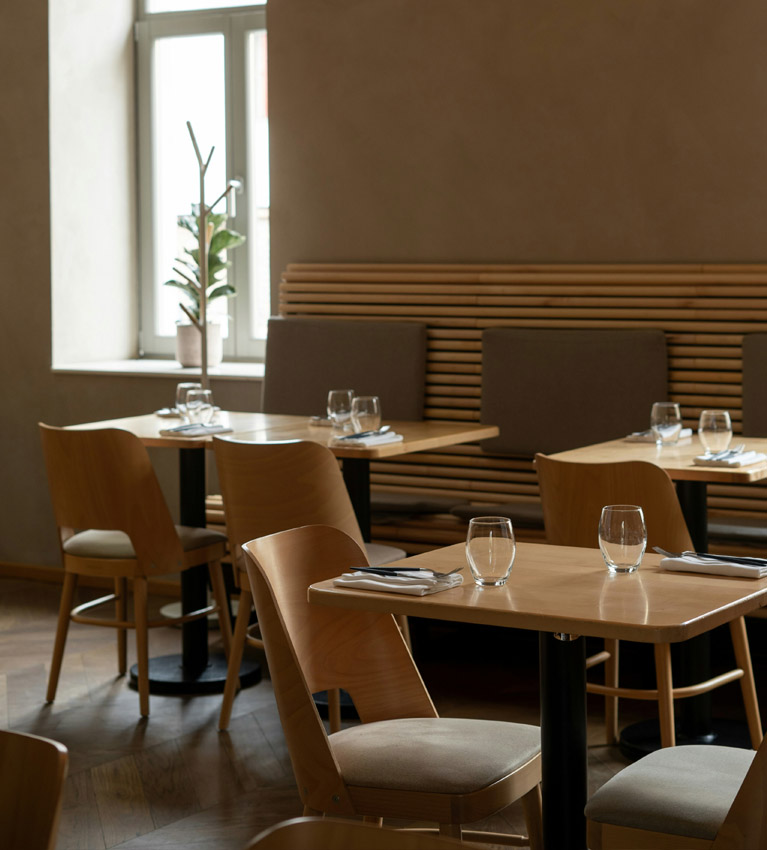
The Art of Explaining
October 8, 2024

Malta’s AI Tourism Platform for a Sustainable Industry Future
October 2, 2024
Introducing the new Malta Tourism Awards: Celebrating Excellence in Hospitality
October 8, 2024
Anyone who steps into a restaurant knows what they’re after: memories made over a good meal. There is something that can make or break that experience, apart from the food itself.
It is an element that is quite tricky to handle, because there is no single correct way of handling it.
I am referring to the art of dish explanation. It is a performative art if you will. Whether explanations about the food menu should be concise or fancy is a proper conundrum. Some guests enjoy absorbing it all, and they would like to know the backstory, information about the ingredients, and details on the Chef’s creative process. Others simply want to savour their meal without interruption. Striking the right balance is crucial.
The Tarot Card Idea
At Dinner by Heston Blumenthal, they have devised an ingenious solution: tarot cards. When guests arrive, they are handed three cards, each representing a different level of dish information:
1. Minimal Explanation: When guests choose this card, their focus remains solely on flavours. No interruptions, just pure enjoyment.
2. Moderate Explanation: Those who opt for this card will get additional details, such as the ingredients, the preparation techniques, and the historical context.
3. In-Depth Explanation: People who choose this card want to dive deep into the chef’s creative process, learn about the dish’s origins and how Heston Blumenthal reimagined it.
This system has clear advantages. Firstly, consistency, since every diner receives the same level of information, and that ensures a uniform experience. Secondly, there is also an element of surprise if guests opt for the minimal explanation.
There are also disadvantages, specifically tied to individual preferences. Guests who have specific dietary restrictions or personal tastes will influence whether the entire table opts for the minimal, moderate, or in-depth explanation, due to their specificities.
Reading Guests
In the absence of anything as innovative or as explicit as Heston Blumenthal’s idea, the team must learn how to read the guests. To do so, they must observe and interpret the behaviour, body language, and mood of patrons to anticipate their needs and provide good service. This skill involves understanding non-verbal cues, such as facial expressions, gestures, and posture, to gauge how guests are feeling and what they might need without them explicitly asking.
For example, a server might notice a guest looking around frequently, indicating they need assistance or are ready to order. Similarly, if guests seem to be in deep conversation or celebrating, the server might decide to give them more space and check in less frequently.
Effective reading of guests allows for a more personalised dining experience, as staff can tailor their approach to suit the mood, expectations, allergies, likes and dislikes of different patrons. This can lead to higher satisfaction, and increased likelihood of return visits. On the flipside, this is a skill that requires particularly perceptive staff who can gauge diners’ interest and adjust accordingly.
In both the tarot card idea and the guest reading exercise, there are common challenges that may get in the way of effective communication, such as the different accents spoken by staff members. Another important question to ask yourself is whether food servers should use elaborate ‘Chef language’ or keep their vocabulary simple for all to understand. Yet another consideration should be a cultural one; being mindful of the different ways in which people perceive concepts such as seniority and understanding that politeness has different meanings to different people.

Carte Blanche Menu
Rosamì at The Villa, a one MICHELIN star restaurant is the first restaurant in Malta to introduce a carte blanche menu, where guests are delighted by the kitchen’s creative surprises. Here, guests share any allergies or preferences upfront, then entrust the Chef’s imagination. It’s crucial for the Front of House to articulate the Chef’s creations flawlessly when presented at the dining table. As guests discover Rosamí dishes, the waiting staff provides context, detailing ingredients, cooking techniques, and flavour profiles. This guidance transforms anticipation into a memorable experience that guests will cherish and discuss.
Telling a Story
In a good restaurant, food is not just served to quieten an empty stomach. Chef Clint Grech, Executive Chef at the Michelin-starred restaurant the De Mondion in Mdina, believes that storytelling is essential. In this case, it’s less about the specifics of the techniques used, and more about eliciting emotions. It’s the art of conveying a narrative through food and dining experiences.
This approach tells a story, reflects cultural heritage, personal history, or conveys a specific theme or message. Whilst it is true that all this can be achieved through the selection of ingredients, cooking techniques, presentation styles, and even the ambiance of the dining setting, it is the final storytelling that binds it all together and engages diners on a deeper level, making the meal an immersive and memorable experience that goes beyond just taste.
Striking a Balance
Whether it’s tarot cards or the intuition of your team, it is crucial to find the right way to communicate with guests, to create a memorable dining experience. It is about striking a balance between engaging storytelling and respecting the guest's personal space and preferences.
When a waiter skilfully shares the story behind a dish, food is elevated to become an experience. However, being overly intrusive or pushy can disrupt the dining experience and make guests feel uncomfortable. Effective communication involves reading the guest's cues and adjusting the interaction accordingly—being friendly, professional, and informative without being overwhelming. That is precisely why I like to refer to this balancing act as an art.

Denis Jin Young L.
Denis Jin Young L., a seasoned consultant in the hospitality sector with over three decades of experience, has called Malta his home for over eight years. Presently, he is the Director of Hospitality at the Xara Collection, which includes a variety of establishments such as the Villa Barumbara tal-Laring, the Xara Palace Hotel, Relais & Châteaux, Xara Catering, the Xara Lodge, Oka’s at the Villa, Medina restaurant, Trattoria 1530 AD, the de Mondion restaurant, Rosami at the Villa and the Xara Gardens.
Click here to see Horeca Issue 17 online



